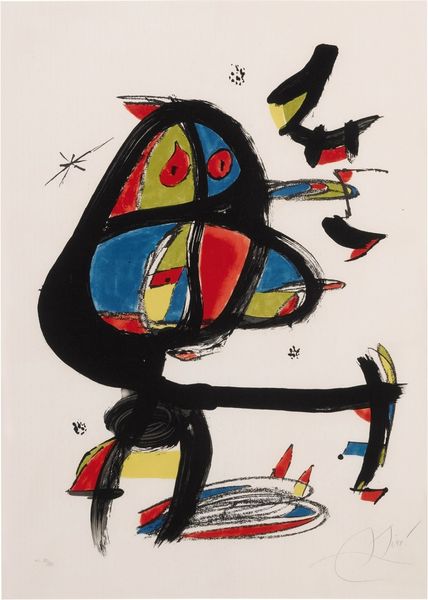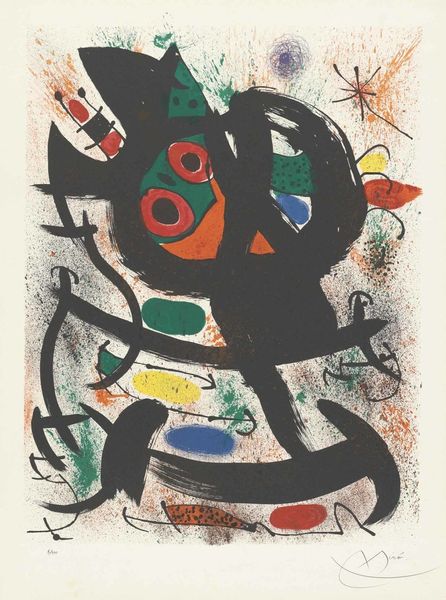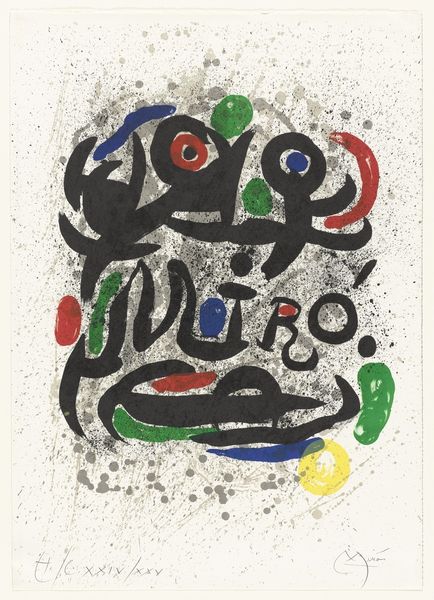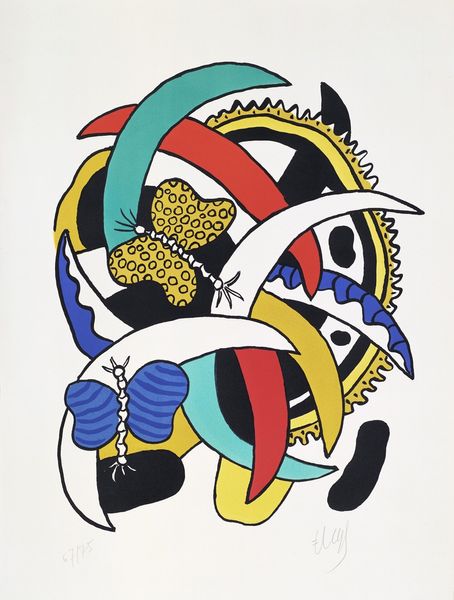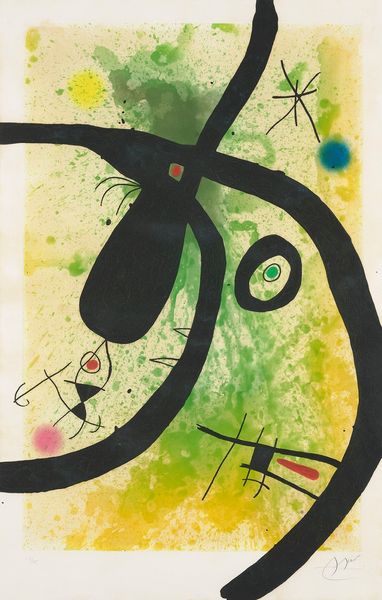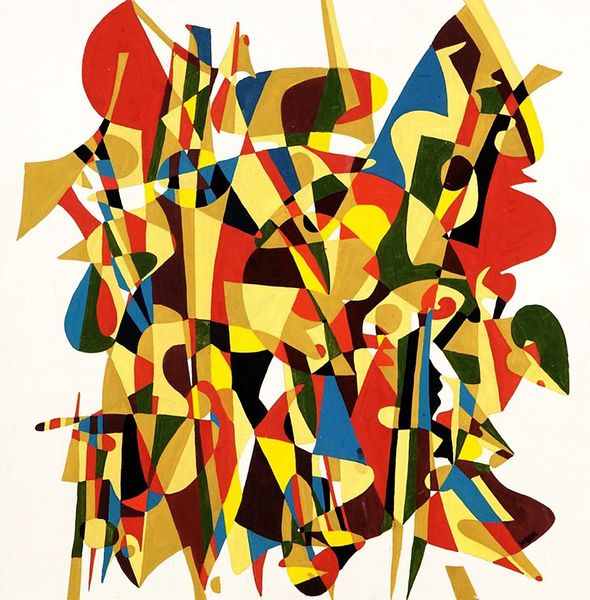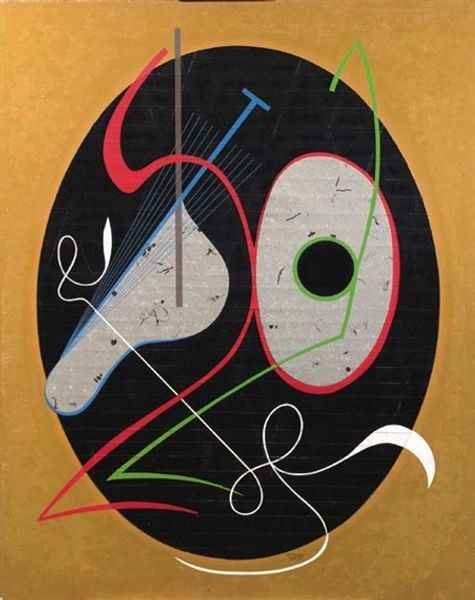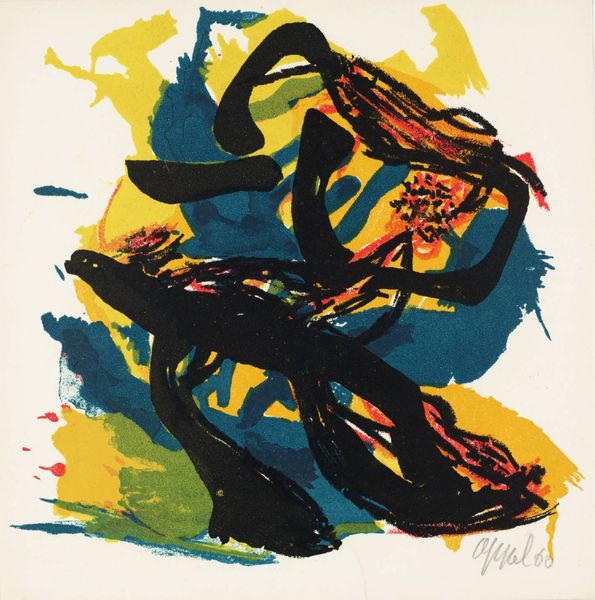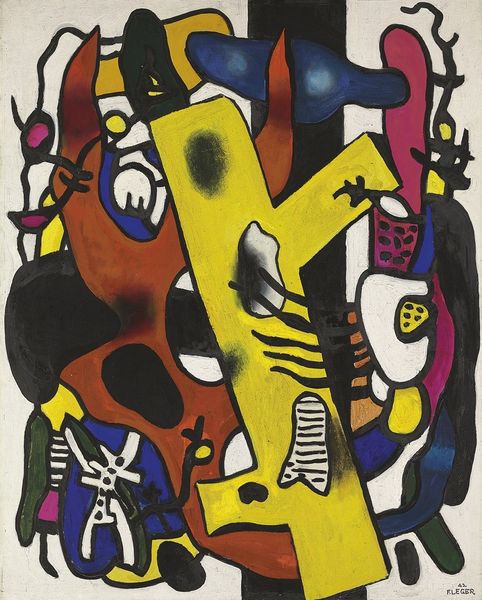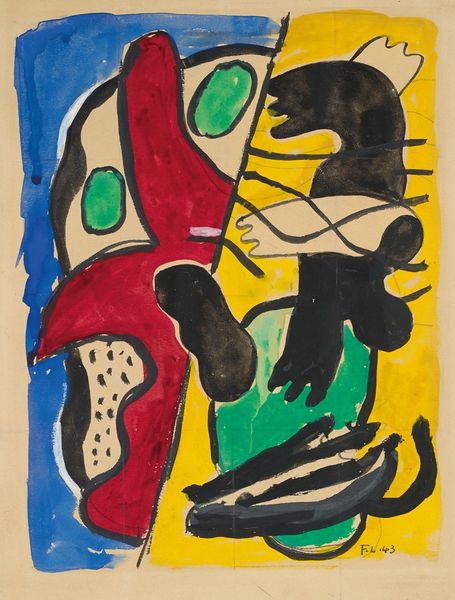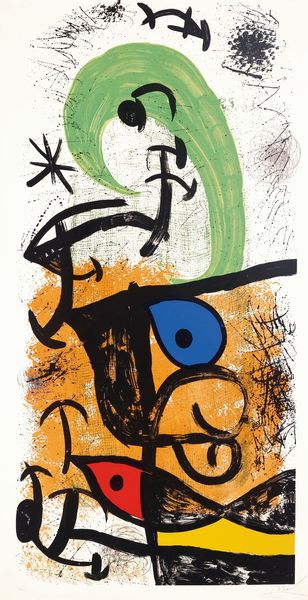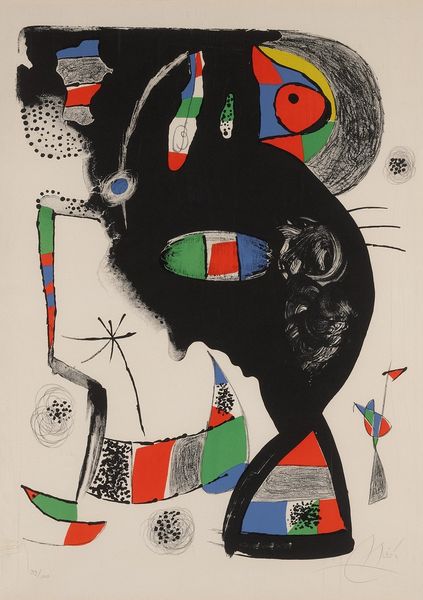
mixed-media, print
#
mixed-media
# print
#
pop art
#
abstract
#
form
#
geometric-abstraction
#
line
#
surrealism
#
modernism
Copyright: Modern Artists: Artvee
Curator: We're looking at Joan Miró's "Colpir Sense Nafrar IV" from 1981, a mixed-media print showcasing his signature style. What are your immediate thoughts? Editor: My first impression is playful but somewhat unsettling. The bold, childlike forms and bright colors juxtaposed against the stark black shapes create an interesting tension. Curator: Absolutely. Considering Miró’s extensive experimentation with printmaking, notice the layering and textures. The juxtaposition of flat planes of color and splattered ink demonstrates a sophisticated understanding of the medium itself. How do you think this pushes boundaries? Editor: It's an interesting defiance of established high art that mirrors the turbulent social and political climate in Spain. Miró, throughout his career, interrogated notions of power, dictatorship and revolution through this supposed simplicity, challenging the established order. It's fascinating. Curator: Precisely. If we consider the materials further, we see it resists easy categorization by blending printmaking with drawing and painting processes. We can see the ways in which mass production intersects with unique mark-making in a way that challenges notions of the art object itself. Editor: Agreed. Looking at the composition, it's clear how Miró blends elements of Surrealism with a vibrant pop art sensibility. Considering Miró’s historical context in post-war Spain, what social statements can you identify? Curator: This print embodies both accessibility and the avant-garde, inviting wider audiences. How it democratizes the artwork, through reproducible media. Editor: It speaks to broader conversations about identity, too. It's not just about Spanish identity; it addresses universal anxieties and dreams in a fragmented world through visual representation. The figure is almost comical, yet feels haunting and charged with implied commentary about late-stage Capitalism. Curator: Thinking of materiality then, his specific combination reflects innovative use, challenging conventions and ultimately leading viewers towards introspection. Editor: Indeed. Overall, I’m seeing layers of social commentary—violence, resilience, and human psychology as we navigate a world struggling between hope and despair. The childlike aesthetic and vibrant color choices suggest that within every darkness lies a flicker of optimism, and the need for change. Curator: Yes, understanding Miró’s commitment to pushing creative boundaries through material and technique sheds light on art history but, ultimately, highlights a call for broader participation in art and culture.
Comments
No comments
Be the first to comment and join the conversation on the ultimate creative platform.
